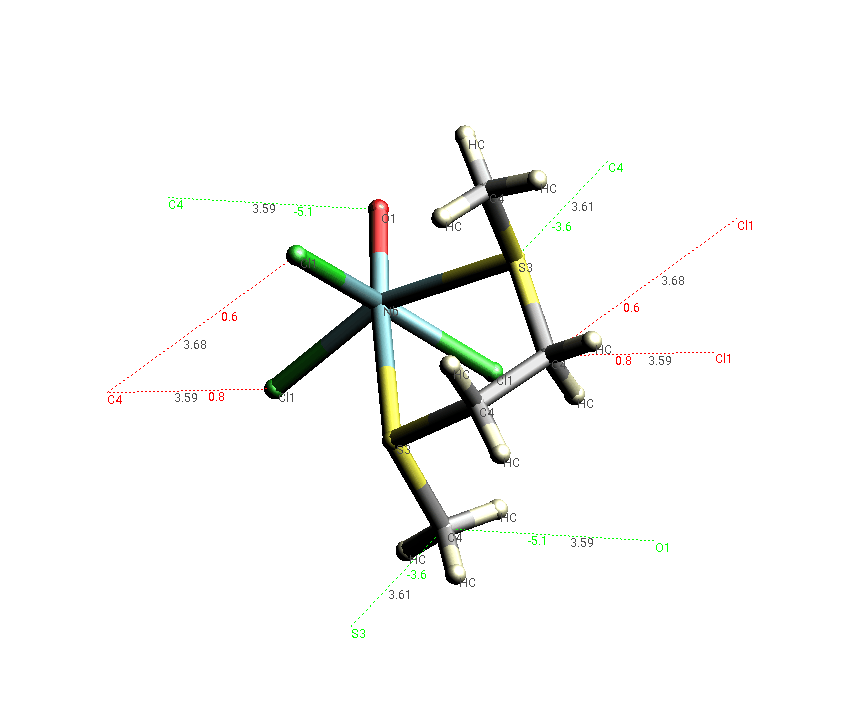FlexCryst - A machine learning based program for crystallography
FlexCryst is an advanced program designed to address fundamental problems in computational crystallography through a suite of integrated modules. This platform leverages modern computational approaches, including artificial intelligence and data-driven force fields, to provide accurate and efficient solutions for researchers and developers. The core functionality encompasses a range of critical tasks, including Crystal Structure Prediction (CSP), quantitative comparison of crystal structures and powder diffraction patterns, and detailed crystal energy calculations.
The program's architecture is centered on an all-atom types data mining force field, which has been meticulously parameterized by analyzing a vast corpus of experimental crystallographic data from the Cambridge Structural Database (CSD). This robust foundation enables FlexCryst to differentiate atom types based on their specific chemical environment, including valence and coordination, leading to high-fidelity simulations. The graphical user interface (GUI) ensures accessibility and ease of use for complex scientific workflows. The illustrative crystal structure of the Niobium-complex AVUPOY02 below exemplifies the program's capability to visualize and analyze critical intermolecular contacts, highlighting both attractive and repulsive interactions.
Keywords:
Crystal Structure Prediction, Crystal Structures and Powder Diagrams comparison, Crystal Energy Calculation, Force Field, Machine Learning

Program Modules
The FlexCryst program is a suite of computational tools for crystallographic analysis, each equipped with a graphical user interface (GUI) and detailed documentation. The modules are designed to address a variety of problems in computational crystallography, from visualization to advanced prediction and optimization.
- Viewer:
- This module provides functionality for the visualization of molecular structures, crystal lattices, and powder diffraction patterns. It also enables the analysis of interatomic interactions within a crystal structure, identifying and displaying the most significant attractive and repulsive contacts and their associated distances.
- Compare:
- The Compare module is dedicated to the quantitative comparison of crystal structures and X-ray powder diffraction patterns. Utilizing a proprietary similarity index, this module facilitates rapid comparison and clustering of large datasets, including those from extensive crystallographic databases.
- Score:
- Score performs energy scoring and minimization for organic, organometallic, and inorganic crystal structures. The crystal energy calculation is based on a self-consistent empirical potential, with parameters derived from data mining of the Cambridge Structural Database (CSD).
- Prediction:
- This module facilitates the crystal structure prediction (CSP) of rigid organic, organometallic, and inorganic compounds within common space groups. It requires the molecular geometry as input and can also handle flexible molecules with known or pre-calculated conformations. The All Atoms Data Mining Force Field employed in this module is capable of differentiating atom types based on their valence and coordination environment.
- Powder Fit:
- Powder Fit is a preparatory module for powder diffraction analysis. It is used to determine the background and analyze the line profiles of experimental powder diffraction patterns, which is a critical step prior to crystal structure determination.
- Powder:
- This module enables crystal structure determination from powder diffraction data, for both indexed and un-indexed patterns. It incorporates a novel similarity index for automated comparison of powder patterns, which remains effective even in the presence of significant deviations in cell constants and overlapping reflections. The module accepts input from the PowderFit module, the molecular geometry, or a set of predicted structures from the Prediction module.
- Optimize Potentials:
- This module allows for the optimization of parameters within the All Atom Types Data Mining Force Field, enabling customization for specific atom types or classes of compounds of interest.
Publications
Our work on FlexCryst is grounded in peer-reviewed research, ensuring the scientific validity and robustness of our computational methods. The key methodological advancements underpinning the software are detailed in the following publications:
-
Data mining. I. Machine learning in crystallography
Published in International Tables for Crystallography, Vol. C (July 2022), this paper lays the theoretical foundation for our use of machine learning to analyze and interpret large-scale crystallographic data. It discusses how data mining techniques can be applied to derive empirical potentials for accurate crystal energy calculations. DOI: 10.1107/S1574870721008235. -
A general force field by machine learning on experimental crystal
structures. Calculations of intermolecular Gibbs energy with
FlexCryst.
Appearing in Foundations of Crystallography 79.2 (2023), this publication presents our novel all-atom types force field. The paper explains how this force field, developed via machine learning on experimental crystal structures from the CSD, allows for precise calculations of intermolecular Gibbs energy, a crucial metric for predicting crystal stability and polymorph landscapes. -
Google Scholar
For a comprehensive list of publications and citations related to our work, please visit our Google Scholar profile. -
ResearchGate
Additional publications, preprints, and research updates can be found on our ResearchGate profile.
Contact
Download FlexCryst - Viewer
To download FlexCryst, please first fill out the contact form above and agree to the license agreement.
Standard License Agreement
By downloading and using FlexCryst, you agree to the terms of the Standard License Agreement. This license grants you a non-exclusive, non-transferable license to use the software for academic and non-commercial purposes. Redistribution, modification, or reverse engineering of the software is strictly prohibited. The software is provided "as is," without any warranties. For the full terms and conditions, please read the full document.
Linux Installer 🐧
Installation Steps
- Fill out the contact form and agree to the license.
- Download both the **installer** and the **zip-ball** files above.
- Open a terminal and navigate to your downloads folder.
- Make the installer file executable by running:
chmod +x install.sh - Run the installer:
./install.sh
Windows Installer 🪟
Download is under development and will be available soon.Installation Steps
The Windows installer is currently under development.
